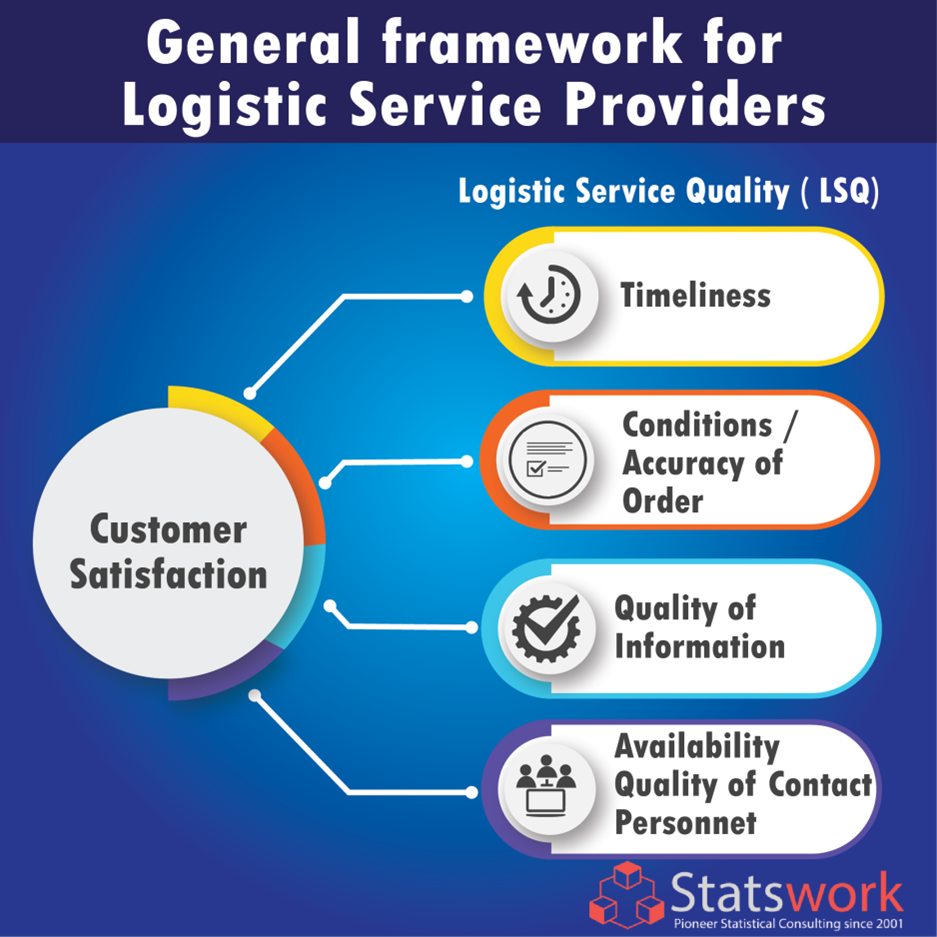How to conduct the efficiency and productivity analysis of logistic providers’ services?
Introduction:
The continuous flow of knowledge, product, and funds between vendors, producers, sellers, retailers, and consumers are one of the supply chain’s dynamic characteristics. The involvement of vendors or logistics service providers, responsible not only for the procurement of raw materials and supplies but also for the delivery of such materials and supplies, contributes to supply chain productivity and delivers finished products to the consumer. Outsourcing logistics functions allows an organisation to concentrate on its core competencies and make the most money. In this article, the core efficiency and productivity of Logistics Service providers can be discussed.
Logistic Provider’s Services:
An organisationthat sells goods and services must find out how to get such products and services. Suppose the goods and services are delivered and sold online. In that case, they must also decide how the products can be transported from one location to another using specific shipping and logistics services. There are three different categories of logistics services that are widely used. The logistics industry is large and diverse, with various resources that affect how goods are shipped from the manufacturer to specific recipients. Let’s surf into the primary services of Logistic Service providers.
- Warehousing services:
Until being delivered, the commodity is either stored in a warehouse or transported in a series of warehouses. Some businesses choose to use their own facilities, while some collaborate with third-party logistics service providers. They usually receive ship, and store items for their clients. The amount of storage you need will decide the dynamic of space your goods need, as well as the time aspects of your need for space, the ease at which your products can be accessed, and several other factors.
- Freight services:
Freight transportation is commonly used to transport large products and large orders. It covers various vehicles such as aircraft, trains, cargo, trucks, among many others. Drayage services allow your order to be shipped from ports to specific warehouses for storage as part of freight services. The distribution provider’s responsibility is to ensure the supplies are shipped on schedule, regardless of the situation or the company’s circumstances. It makes it possible to maintain brand and consumer satisfaction.
- Courier services:
One of the company’s most common delivery services is courier shipping. UPS, FedEx, and other shipping firms are really common these days. Courier service is typically used for smaller orders and goods that are particularly delicate and need special handling during distribution. The pace of courier services is higher than that of freight transport. The explanation for this is simple: courier services handle smaller shipments, not huge quantities of goods. Many retailers save delivery services until the last phase, where the merchandise is delivered straight from the factory to the expected customers.
Analysis Of Efficiency And Productivity In LPS:
The value of City Logistics (CL) as a holistic solution aimed at reducing the detrimental consequences of delivery operations without penalising social, cultural, or economic problems has been highlighted due to increased urbanisation and recognition of freight transportation impacts. Logistics service providers (LSPs) play a critical role in this context. [1]
There are several patterns hidden in Logistics Service Providers to scrutinise the productivity and efficiency:
- Rather than network and experiment, focus and adhere. This trend focuses on the strategic perspective of greening LSP practices and a competitive understanding of the logistics market’s growth. [2]
- Internal emphasis on “spread” as opposed to broad interaction to reach individual consumers. Customer focus and the transition and exchange of green skills and competences are also part of this trend.
- Top-down passiveness vs. bottom-up technological exploration, the final trend is concerned with how green practices are handled and regulated within the business and resource investment.
Figure: General framework for Logistic Service Providers [4]

Table:
Transportation, Storage and Communication Industries Economic Presentation of 2016 and 2017 [3]
| Industry | Gross Value for 2016 (in Million Pesos) | Gross Value for 2017 (in Million Pesos) | Growth Rate (%) |
| 1.Transport and storage | 129,918 | 137,219 | 5.6% |
| Land | 72,663 | 76,045 | 4.7% |
| Water | 5,985 | 5,952 | -0.6% |
| Air | 20,564 | 21,316 | 3.7% |
| Storage and service incidental to transport | 30,706 | 33,907 | 10.4% |
| 2.Communication | 10,904 | 112,233 | 6.0% |
| Gross Value Added | 235,822 | 249,452 | 5.8% |
Conclusion:
The various trends can be clarified by the corporations’ efforts to maximise productivity, although they have sometimes preferred contradictory methods of behaving and reasoning. [6]
The sale of retail and household goods makes extensive use of 3PL facilities. These services enable businesses to respond quickly to customer demand while also lowering supply-chain delivery costs. Warehouse and logistics management is a difficult job that ensures the timely supply of high-quality products to consumers. [5]
Future Scope:
The focus of future studies will be on evaluations of complex markets and other geographic areas. In this way, the key aspects of each market under review can be identified, and comparisons between other markets can be made. [2]
References:
- De Marco, Alberto, et al. “Factor influencing logistics service providersefficiency’in urban distribution systems.” Transportation Research Procedia 3 (2014): 499-507.
- Isaksson, Karin, and Maria Huge‐Brodin. “Understanding efficiencies behind logistics service providers’ green offerings.” Management research review (2013).
- German, Josephine D., Maria Katrina T. Asuncion, and Louie E. Pacheco. “Increasing Productivity and Efficiency for Third Party Logistics Service.” Proceedings of the International Conference on Industrial Engineering and Operations Management. 2019.
- Ho, Jessica Sze Yin, et al. “Logistic service quality among courier services in Malaysia.” International Journal of Trade, Economics and Finance 3.4 (2012): 113-117.
- Kilibarda, Milorad, Slobodan Zečević, and MiloradVidović. “Measuring the quality of logistic service as an element of the logistics provider offering.” Total Quality Management & Business Excellence 23.11-12 (2012): 1345-1361.
- Celik, Erkan, AlevTaskinGumus, and MelikeErdogan. “A new extension of the ELECTRE method based upon interval type-2 fuzzy sets for green logistic service providers evaluation.” Journal of Testing and Evaluation 44.5 (2016): 1813-1827.

 Previous Post
Previous Post Next Post
Next Post